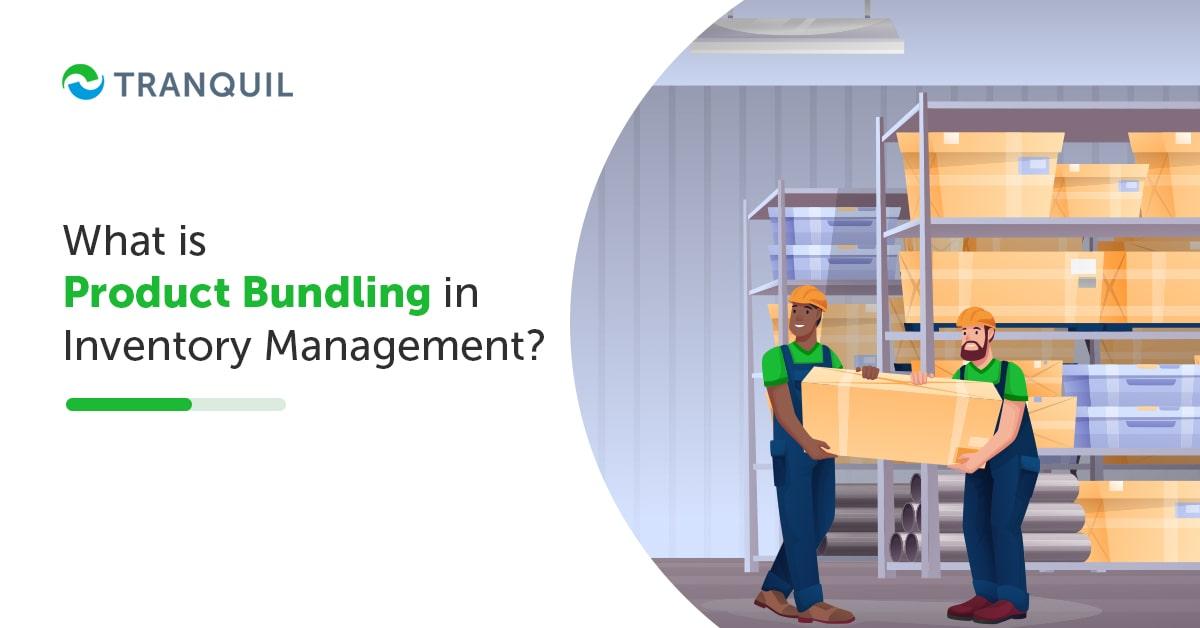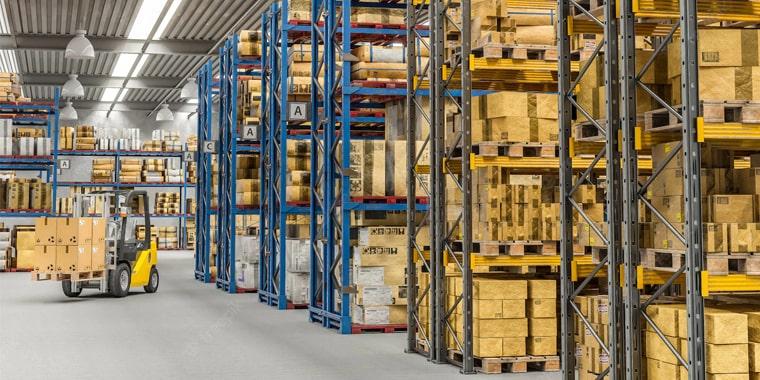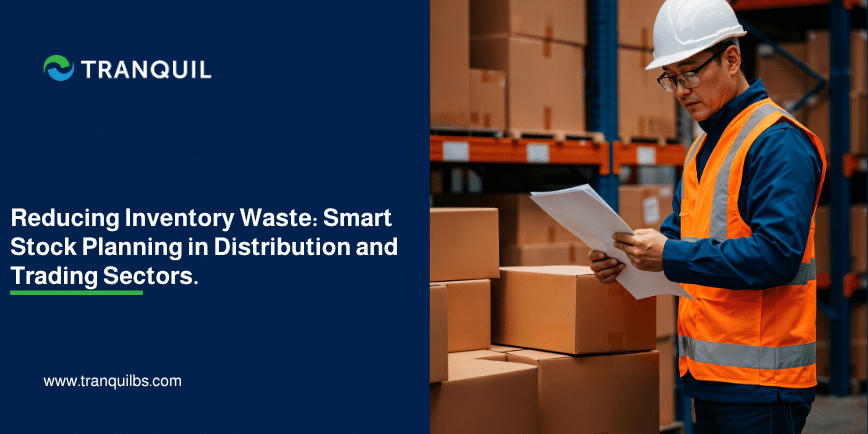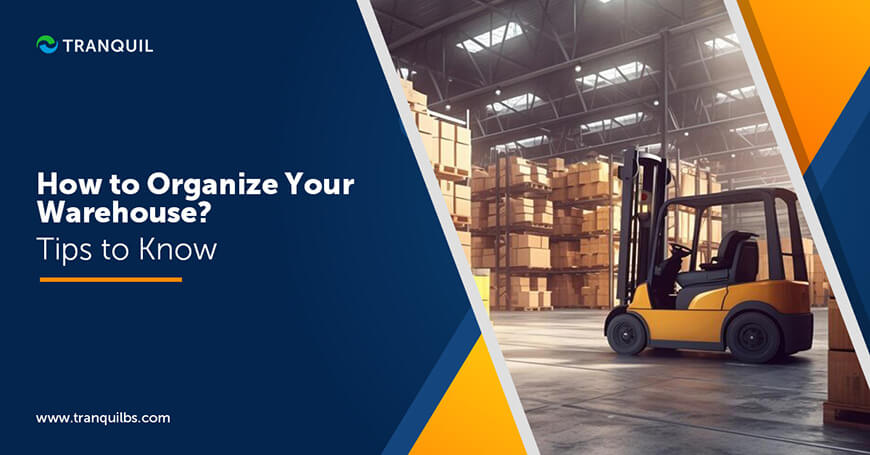
What is Product Bundling in Inventory Management?
Walk into any supermarket, and you are besieged with Buy one Get one free offer; Microsoft Office is a set of software solutions sold together; combo meals at fast-food chains, like a burger, fries, and coke; a music CD that you buy has several songs on it – without us realizing, we experience product bundling in our everyday lives.
In spite of this, many online businesses don’t even consider this strategy, let alone implement it.
But by ignoring this strategy, businesses are losing out on a lot of revenue.
Product bundling is the ideal method to increase revenue, sell slow-moving inventory, and offer a ‘complete solution’ to your customers.
ALSO READ: Pipeline Inventory and Decoupling Inventory
What is Product Bundling?
Product bundling is simply a technique whereby the seller bundles or groups together several products to be sold as a single unit for a specific amount.
With this strategy, customers are encouraged to buy additional products.
For example, let’s say that at a fast-food chain, a burger may cost SAR 23, a coke SAR 5, and a serving of fries SAR 8.
If you add them up, it comes to SAR 36.
But if you choose the meal combo, you get the same for say SAR 32.
Now even if you had wanted only the drink and burger, which would have cost you SAR 28, you are tempted to choose the meal, because then you get the fries at half the regular price.
In the same manner, a supermarket may bundle products like this: 1 kg detergent, 1 bottle dishwashing liquid, 1 bottle softener, 1-floor cleaner, and say 1 toilet cleaner, and sell it at a slightly lower price than what the total would be.
With bundling sales of a lot more products can be increased which would otherwise have not been possible.
Advantages of Product Bundling

Bundling sales offers several advantages to businesses; it allows you to do a lot more with the stock in hand.
1. Increases your Average Order Value
With product bundling in business, you can boost sales and profits of specific items, with time.
Grouping products together can induce your customers to purchase more than a single product in one purchase – thereby increasing the average value of your orders.
In the previous example of the cleaning products – by offering an attractive price on the bundle, the customer is encouraged to buy a floor cleaner and toilet cleaner even though they only wanted the detergent and softener at present.
2. Reduces Cost of Marketing and Distribution
As you bundle products and sell more, your marketing and distribution expenses come down; rather than market individual products, you now only need to market your bundles as one product (of course, the products have to complement each other).
Bundling different items together necessitates only a single bin to store the bundles.
You also need to ship a lesser number of boxes containing individual items; as an eCommerce retailer, you can save big on shipping.
Suppose you have 8 different products, and sell all of them, you would need 8 different boxes and 8 separate consignments.
However, if they are bundled as one, you could send it out in one shipment, reducing your cost of distribution.
ALSO READ: What is Batch Picking?
3. Product Bundling Decreases the Need for Revenue-Sharing With Competitors
Let’s suppose you own a sports goods store.
You sell unbundled badminton rackets.
Most people who buy the rackets are likely to need shuttlecocks, badminton net, shoes, socks, jerseys, shorts, handle grip, and so on.
If you don’t have such a bundle ready, it is highly likely that customers may go look for such a bundle in another store.
They may also check out prices online, eventually purchasing from your competitors.
By providing a bundle of goods that they need, you offer convenience, and they are much less likely to go search elsewhere.
You may have to offer a slight discount on the entire bundle, but it will be worth it.
4. Move Stagnant Inventory

Products that don’t get sold become the dead stock in your warehouse or on your shelves, and increase your carrying costs – after a while, you may even have to discard it all.
However, with the bundling of products, you will be able to clear out slow-moving products before it becomes dead stock and cause loss to the company.
This is especially effective if you can bundle a slow-moving product with a fast-moving one.
Let’s say you have Assam Tea which is a fast-selling product.
You also sell crockery in your supermarket but it is moving very slowly.
You can bundle the tea and a set of teacups or mugs together, and customers will buy them willingly.
This helps you free up rack space, decrease wastage of inventory, and reduce inventory carrying costs.
In fact, bundling is the best way to move your slow-moving stocks. You can also get back your capital invested in it.
ALSO READ: What is Dead Stock – How Can You Avoid It?
5. Give Customers a Complete Solution
Selling a product to a customer means they buy just one product; however, when you sell them a bundle, you are selling them a complete solution.
Continuing with the supermarket that bundled cleaning products – they offer a complete home cleaning needs solution with their bundle.
You provide your customers with a comprehensive shopping experience from your supermarket or eCommerce site.
This helps to build brand loyalty and also helps in generating more revenue.
These kinds of bundles also get a lot of word-of-mouth publicity, and you can get new customers while the existing ones keep coming back.
Plus, you get to sell inventory that may move very slowly on its own. For example, in the cleaning products bundle, you can include glass cleaning liquid – not something that sells like hot cakes; however, by bundling it with other products in demand, you ensure that this product also goes off your shelves just as quickly.
ALSO READ: Route and Van Sales
Types and Examples of Product Bundles
Businesses use different strategies when it comes to selling product bundles. Check out some of the well-known ones.
1. Pure Bundles

In this model, the components of the bundle – the different items present in it – are not sold in the store as standalone products but only as part of the bundle.
This strategy offers the limited choice to the customer.
For example, if a company bundles the ingredients of a dish and sells them together, the customer can cook that particular dish, but may not be able to buy those ingredients separately if they wanted to make something else from some of those ingredients.
Let’s say a company has bundled the ingredients to make biriyani – this includes basmati rice, the spices, cashew, ghee, and vegetables and meat required.
Now the customer who purchases this bundle will be able to make only biriyani and nothing else; but if they buy a bag of rice, they can have the choice of making fried rice, pilaf, or anything else.
2. New Product Bundling
This approach includes grouping newly launched products with currently popular products to promote the new product.
This method is popular with online stores; they often mix new products with their fast-selling merchandise to give some exposure to the new product.
The more popular the existing product, the closer it brings your customer to the new product. For example – Apple iPhones are already extremely popular.
Let’s suppose the company comes out with a new wearable device – something revolutionary.
Instead of launching it by itself and marketing that product separately, the company may be able to sell the wearable by bundling it with the iPhone.
In this manner, whoever wants to buy the new iPhone will also buy the wearable device and try it out.
If they like it, the popularity of the new product will spread, and the company can sell it as a standalone product later.
ALSO READ: What is Negative Inventory and How Can you Prevent it?
3. Mix-and-match bundles
This is a strategy employed mostly in physical stores, whereby they give the customers the choice from among multiple products that are similar in nature.
Perishables, bulk items, and other FMCG products can be easily sold in this method.
Customers are given a list of products from which they can choose, and make their very own personalized bundle.
This gives the customers the feeling of being in control of their purchases along with choice and convenience.
It’s a great method to induce customers to buy in bulk without coercing them to purchase products they don’t want to.
For example – a footwear store may allow customers to choose 2 pairs of socks with every pair of shoes they purchase, depending on the price.
ALSO READ: What are Backorders?
4. Cross-sell Bundles
Here, you can sell a complementary item as an addition to your main product and is ideal for accessories, lower-priced items, or parts that complement the main product which is more expensive.
Continuing with the example of shoes – let’s say they are expensive branded shoes; the store may sell extra laces bundled with the shoes.
And since it doesn’t cost much in comparison with the shoes, most people wouldn’t think twice before buying that bundle.
5. Gifting Bundles
Such bundles are targeted at people who are looking to give a set of products as gifts to their loved ones.
They are usually sold during festival times, but may also be sought after as birthday and anniversary gifts.
For example, cosmetics companies or makers of personal care products offer hampers that contain a set of skincare products or makeup items that complement one another. Like: a body wash, shampoo, conditioner, lotion, loofah, and face scrub, can be bundled and beautifully packed to make it more appealing.
ALSO READ: What Are the Challenges Facing Purchasing and Supply Management?
6. Inventory Clearance Bundling

When there are slow-moving items in your inventory, it is a good idea to bundle them with a fast-moving item to reduce your carrying costs and clear space in your warehouse.
Usually, such bundles have a slightly lower price so that the customers are motivated to buy them.
Let us say there is a garment store that sells several pairs of trousers every day, but belts are very slow-moving.
In such a case, the store can bundle a belt with a trouser to ensure that the belts are taken off the shelves and into customer shopping carts – of course at a slight discount, but it is still better than having dead stock.
7. Buy-one-get-one Bundles
Nearly every supermarket has these offers, and they are probably the most common type of product bundling followed.
These are especially useful for FMCG, perishables, or items prone to becoming obsolete.
It is also a good strategy to be used on items that most people are likely to buy only once – say, a hair straightener.
By offering it at 50% off, you are encouraging customers to add more products to their shopping cart because they are saving money on this product.
Summary
There is no doubt that product bundling can lead to increased sales for you and added convenience to customers. It can lead to increased customer loyalty and attracting new customers too. Bundling products needs to be done properly to gain the maximum benefits. With the right software, you can ensure better revenues for your company.
At Tranquil ERP, we have robust inventory management software that gives you real time insights into your stocks, helping you make informed decisions regarding product bundling. Schedule a demo at your convenience to know more.



